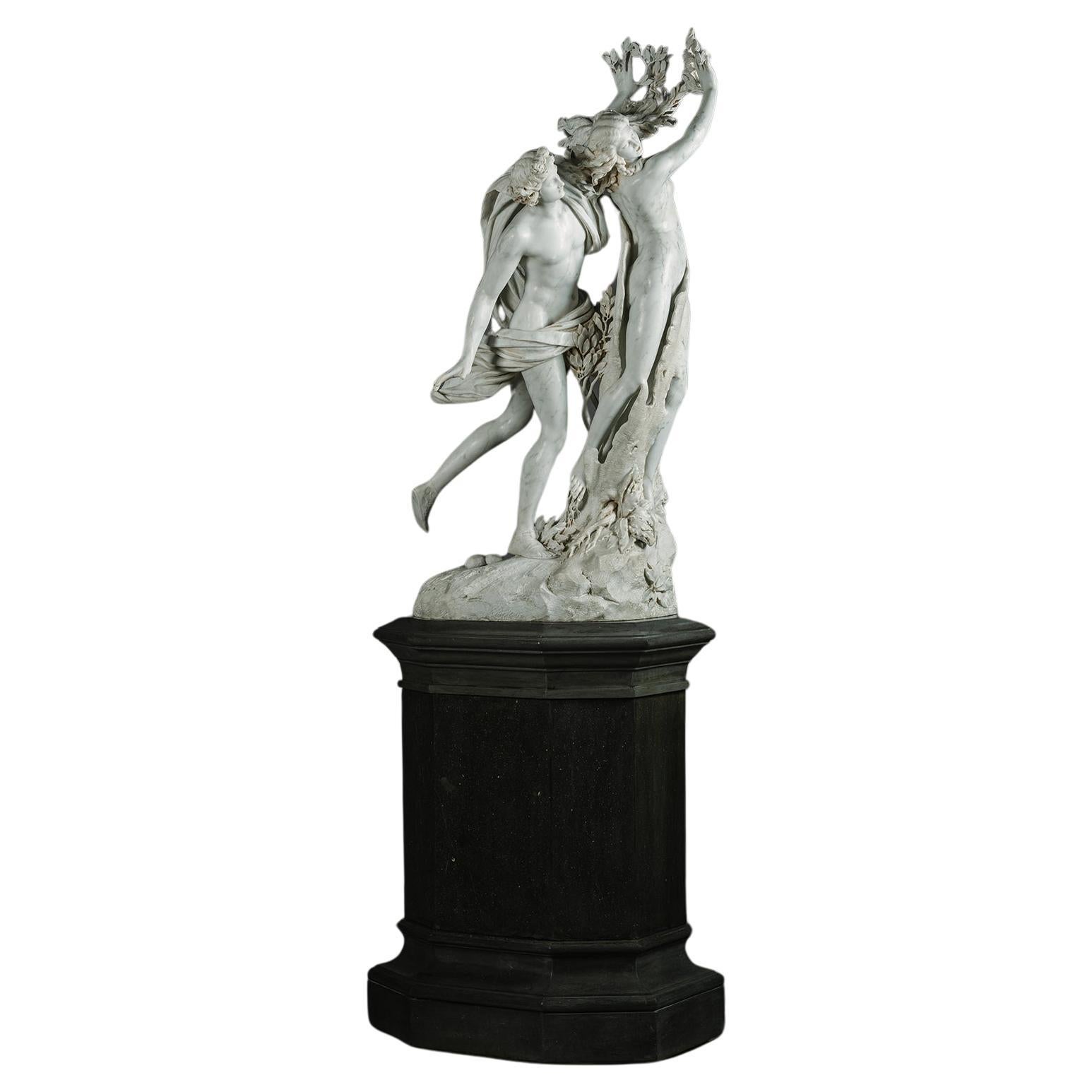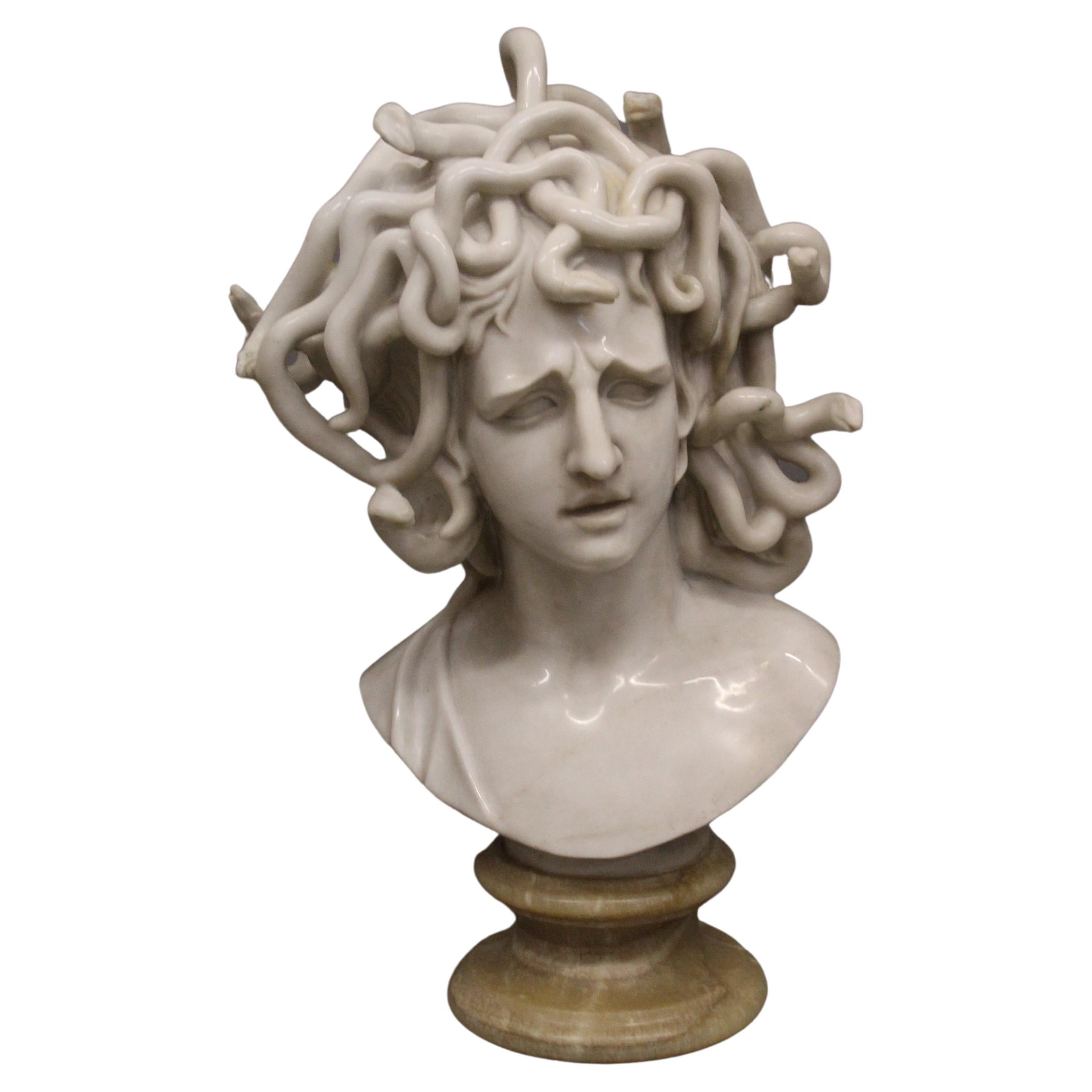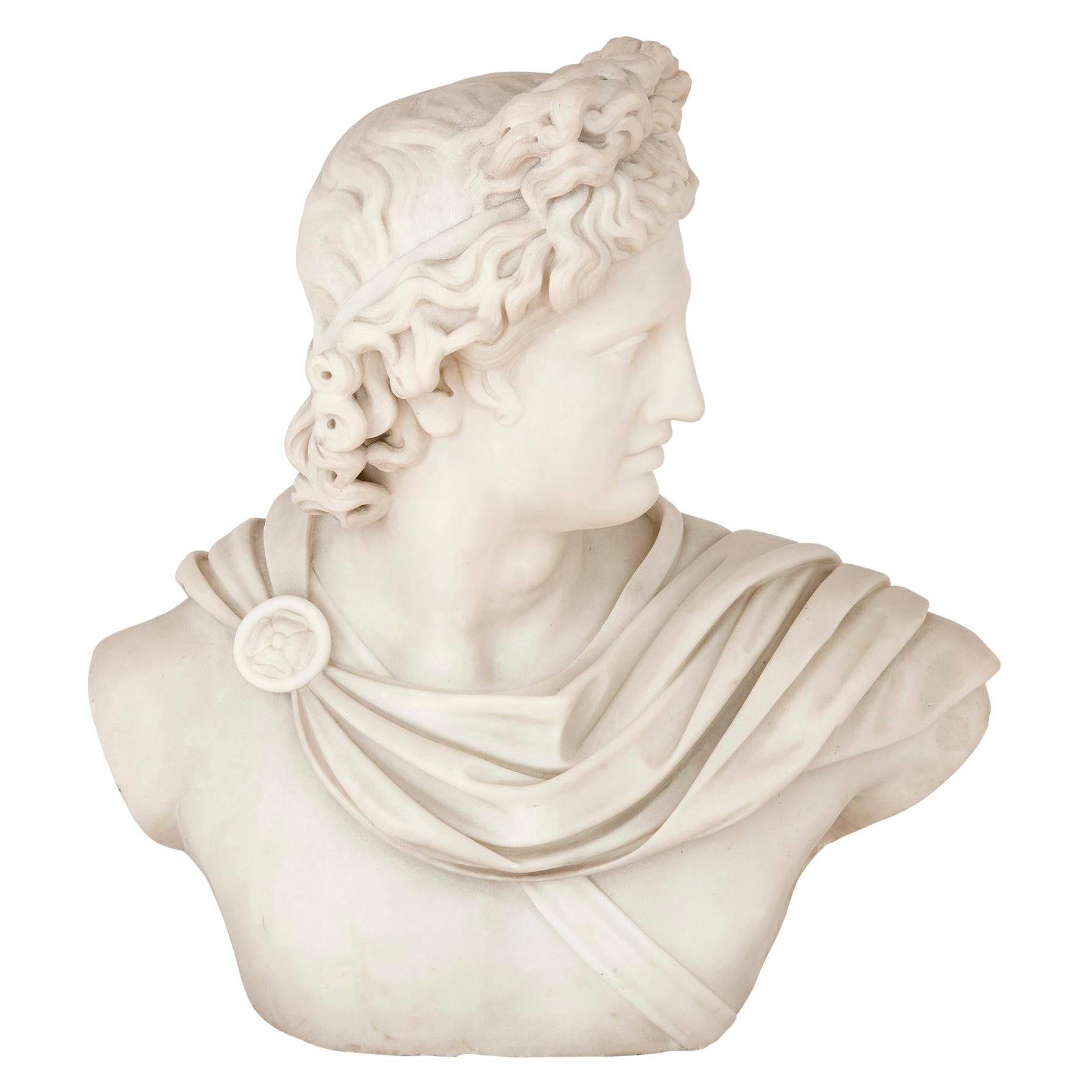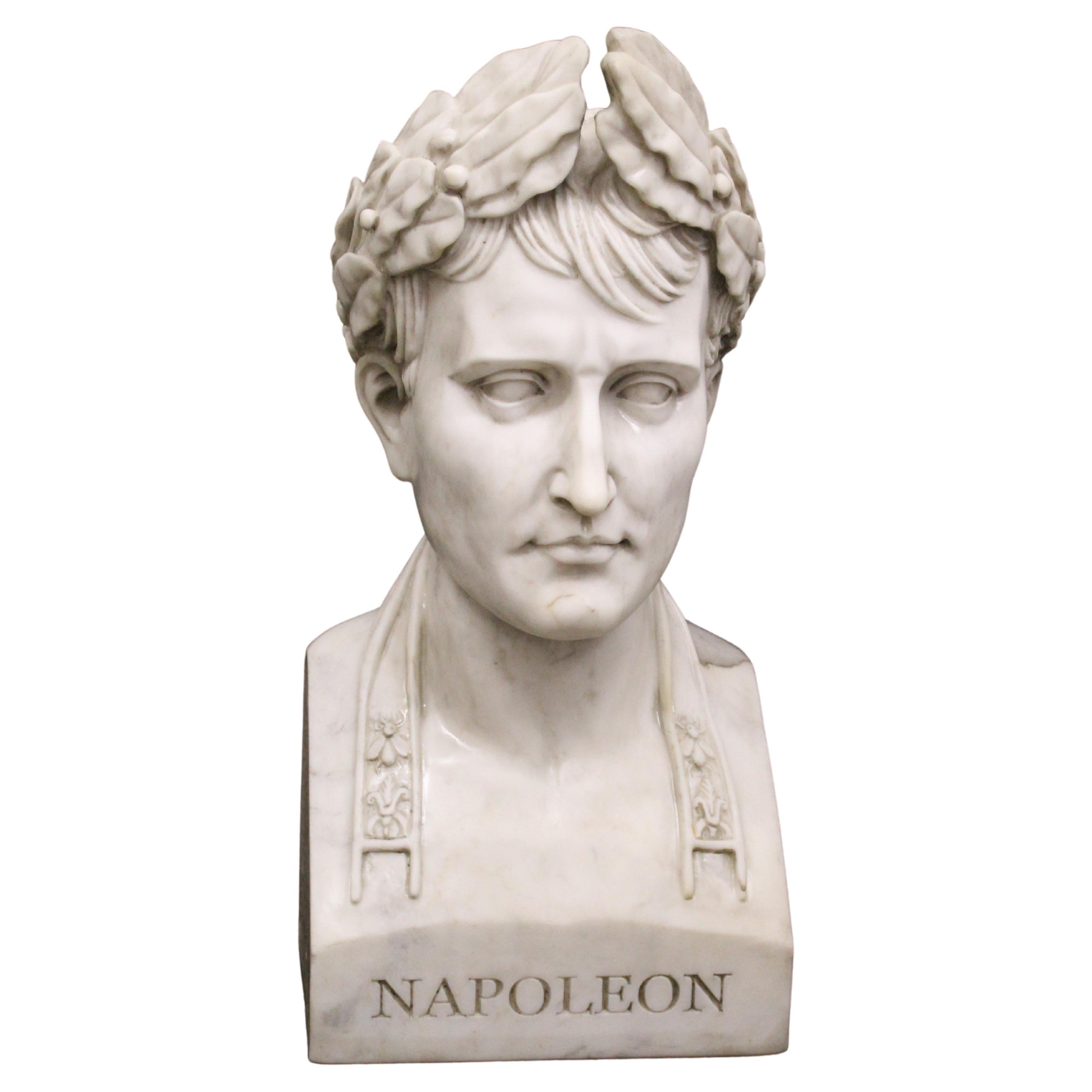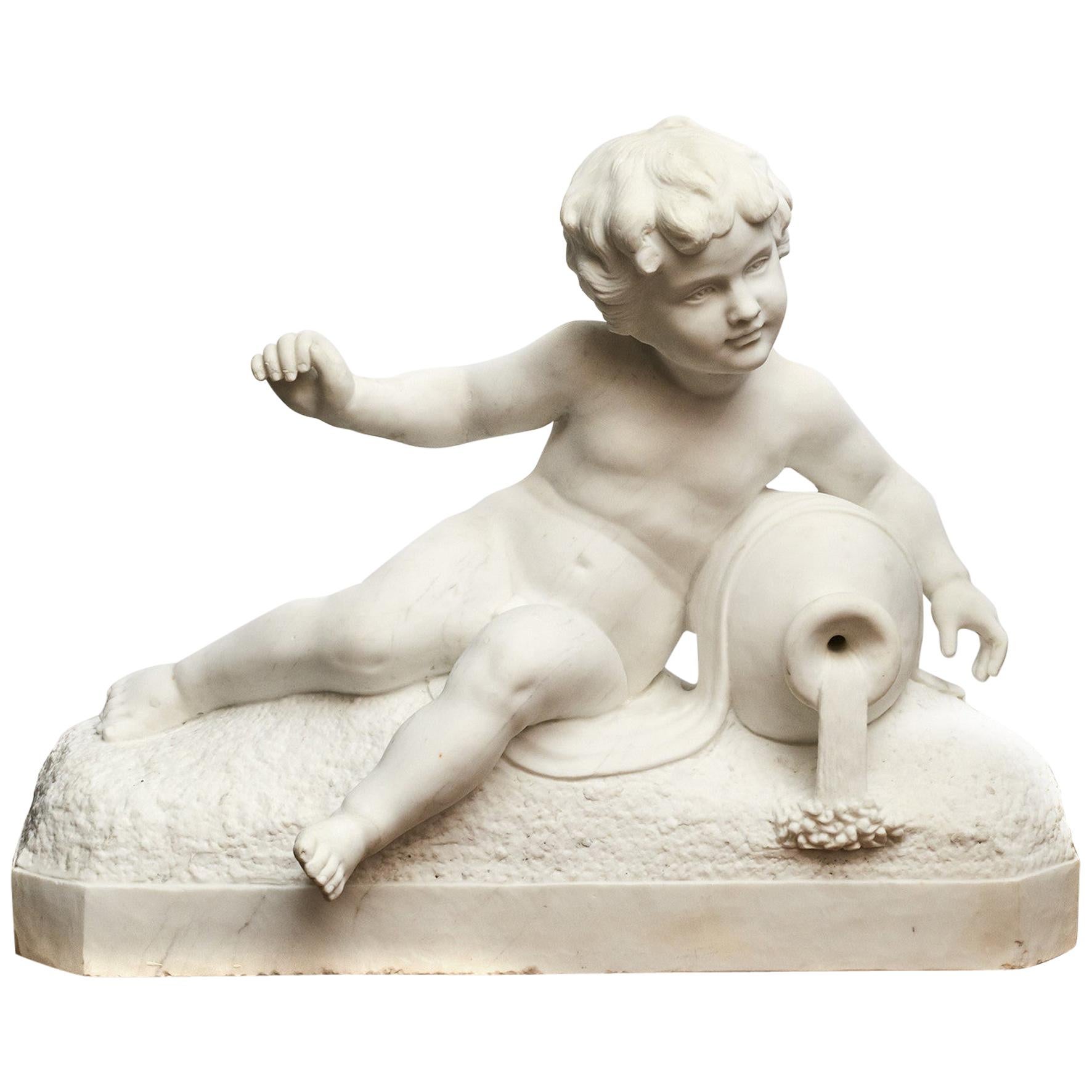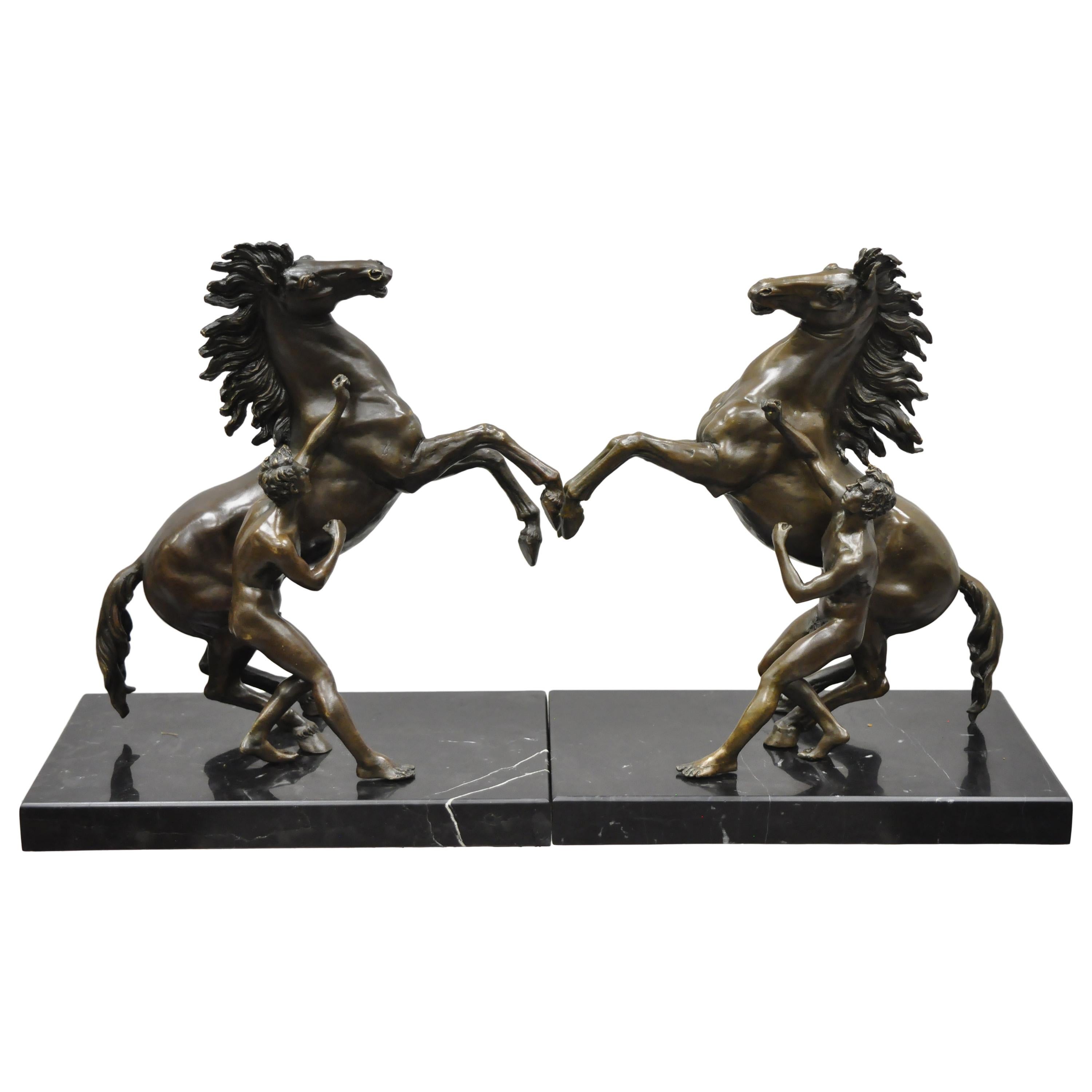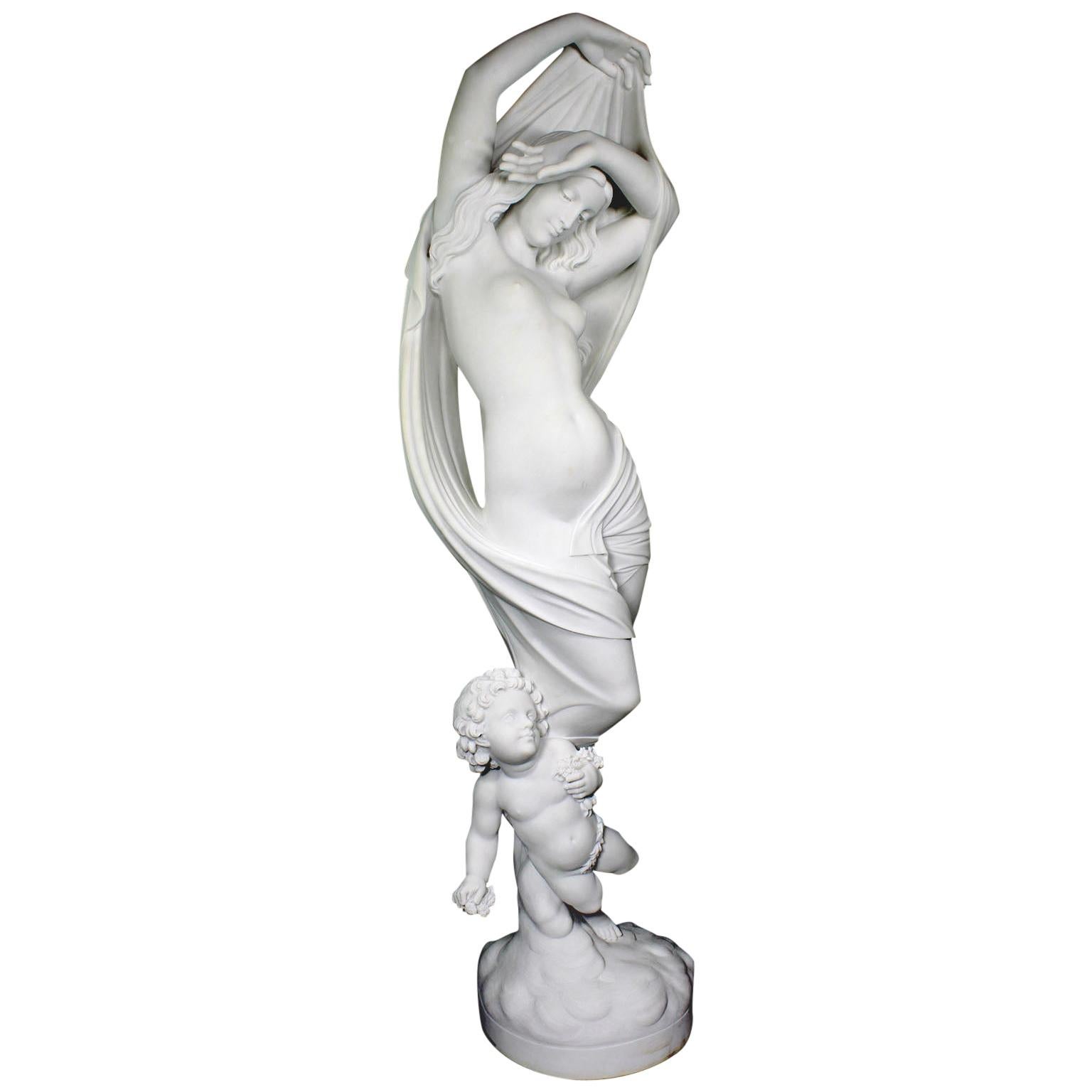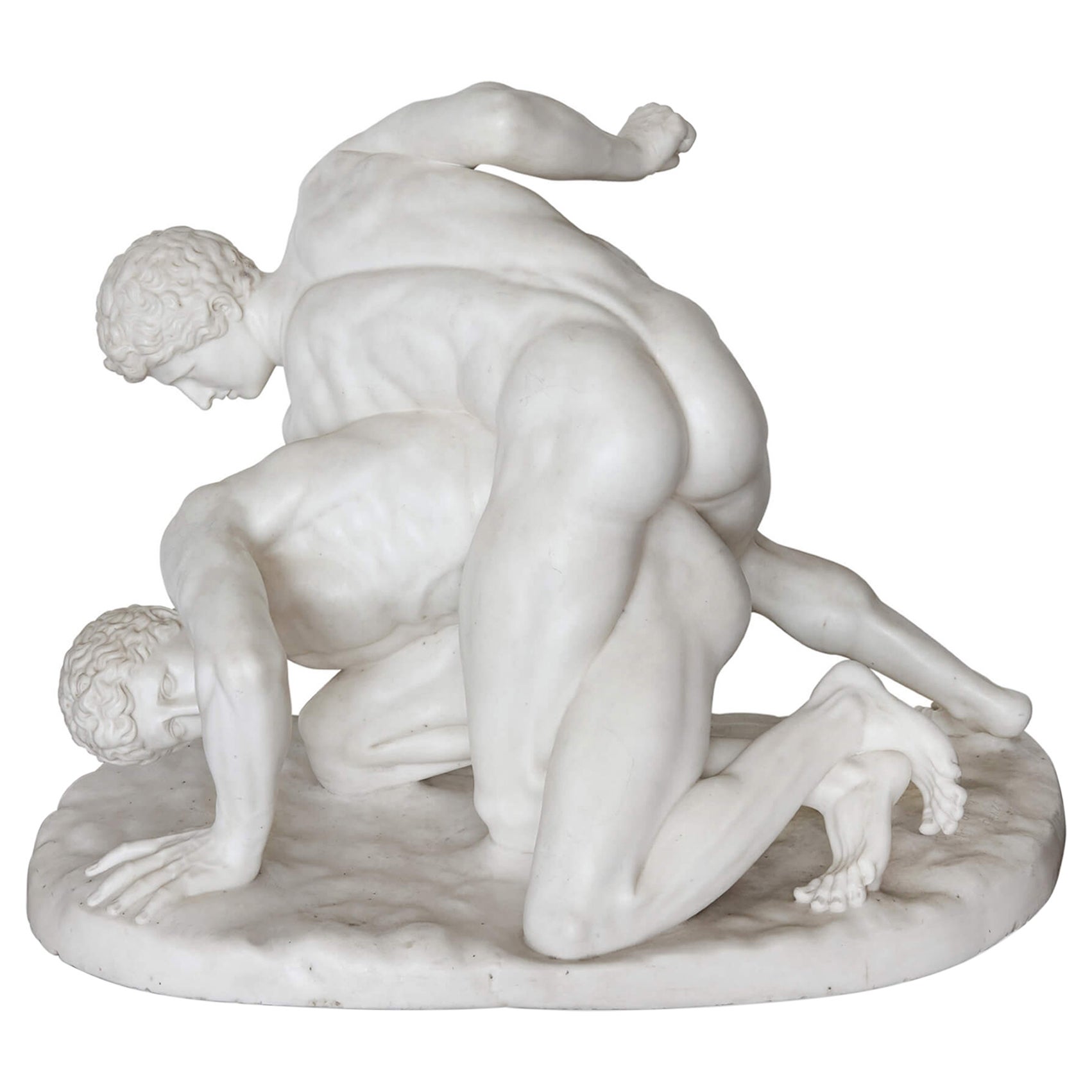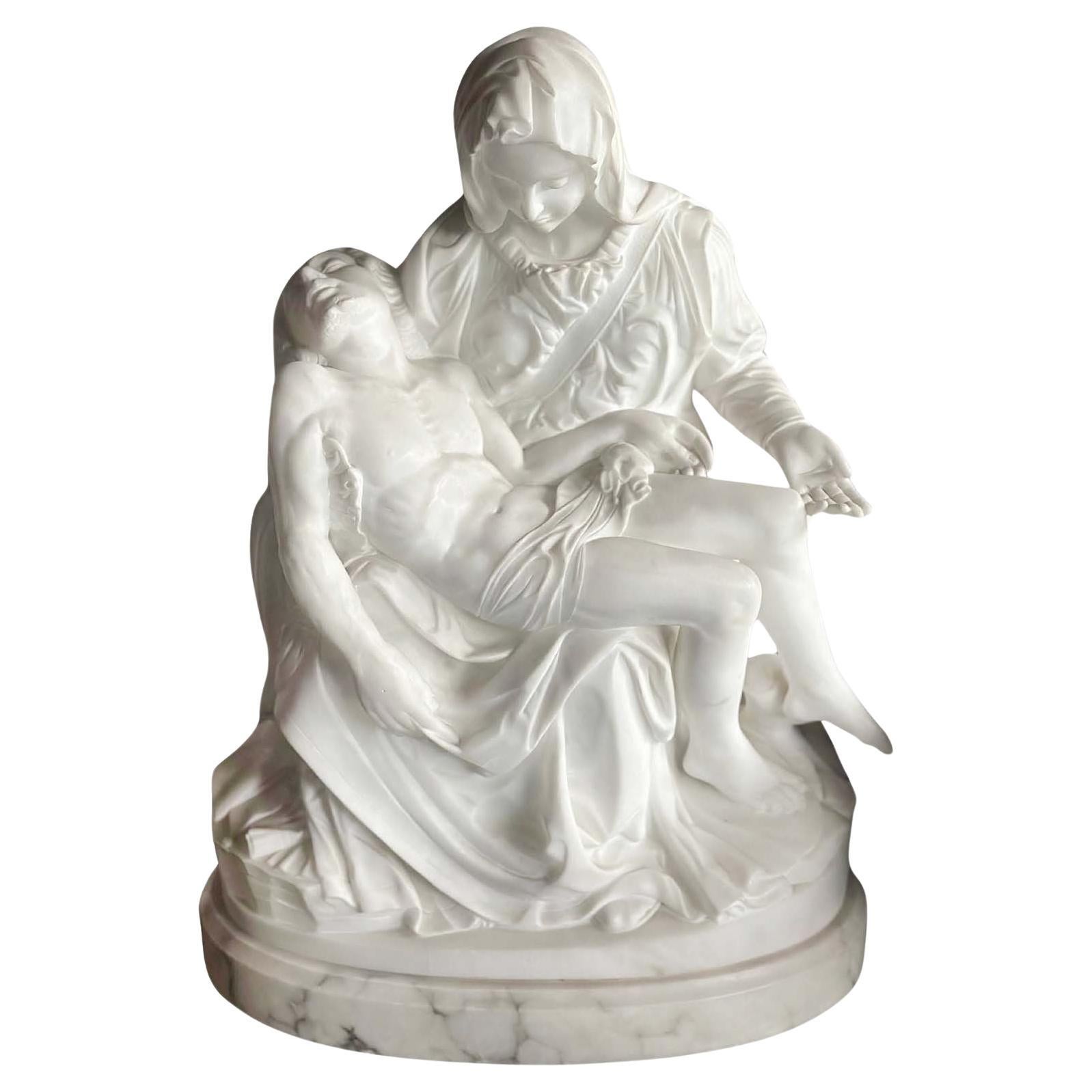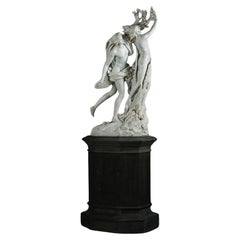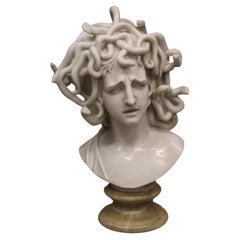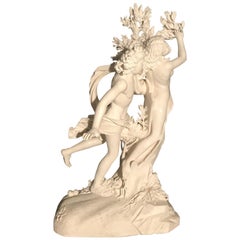
Italian White Marble Sculpture of Apollo and Dafne after Gian Lorenzo Bernini
View Similar Items
1 of 19
Italian White Marble Sculpture of Apollo and Dafne after Gian Lorenzo Bernini
About the Item
- Dimensions:Height: 39.38 in (100 cm)Width: 27.56 in (70 cm)Depth: 15.75 in (40 cm)
- Style:Baroque (In the Style Of)
- Materials and Techniques:
- Place of Origin:
- Period:
- Date of Manufacture:2018
- Production Type:New & Custom(Re-Edition)
- Estimated Production Time:23-24 weeks
- Condition:
- Seller Location:Rome, IT
- Reference Number:1stDibs: LU3798311266081
You May Also Like
- A White Statuary Marble Figural Group of Apollo and Daphne After BerniniBy BerniniLocated in Brighton, West SussexAn Impressive White Statuary Marble Figural Group of Apollo and Daphne After The Celebrated Model by Gian Lorenzo Bernini (1598–1680) at the Galleria Borghese in Rome, On Dove Grey Marble Pedestal. Sculpted in the round from a single block of white statuary marble. The male figure of Apollo captured as if in motion, running forward with his weight balanced on his right leg, his robe billowing behind. He leans forward encircling with his left arm the goddess Daphne and at that very moment she transforms into a laurel tree. The statue stands atop an original solid dove grey marble pedestal with rotating mechanism. Bernini’s depiction of the transformation myth of Apollo and Daphne is a sculptural masterpiece of pure virtuosity. Bernini pushes to the limit the plastic possibility of sculpted marble to freezeframe the moment when the goddess Daphne transforms into a laurel tree to escape Apollo. Just as Apollo thinks he has caught her, Daphne’s fleeing form begins to be enveloped by the encircling bark; her fingers leaf out; her toes take root. Apollo encircles her waist with a confident arm; but his facial expression indicates the beginning of an awareness that something has gone wrong. Daphne seems ignorant of her transformation as she looks back over her shoulder, lips parted in fright. Her mouth seems to frame a silent scream as her face goes blank under the force of transformation. Daphne’s hair swings around as a result of her sudden arrest and blows free with a lightness Bernini himself felt he never equalled. The story of Apollo and Daphne originates in Greek mythology, but the most well-known version is the lyrical telling by the Roman poet Ovid in his Metamorphoses (I.438-567), a collection of Greek fables first written in 8 CE. The myth purportedly explains the origin of the laurel tree and its connection to Apollo. He says he will wear her leaves in his hair, will use her wood to make a bow and lyre and that a crown made of her branches will adorn the heads of royalty and campions of game and battle. Apollo uses his powers of eternal youth and immortality to render the laurel tree an evergreen. The subject of Apollo and Daphne is common in paintings but rare in sculpture for the obvious reason that neither hot pursuit nor transformation from flesh to vegetation seemed remotely suited to three-dimensional treatment. However, Bernini triumphs in his handling of such a challenging subject, creating an hallucinatory effect whereby the figures appear to almost skim over the ground. Bernini’s statue of Apollo and Daphne was commissioned by Cardinal Borghese (1577-1633) and begun in 1622 but not completed until 1625 owning to an interluded during which Bernini sculpted his statue of ‘David’. Cardinal Borghese was secretary to his uncle Pope Paul V and in the classic pattern of papal nepotism wielded enormous power as the effective head of the Vatican government. Cardinal Borghese as an art collector was patron of the painter Caravaggio and the artist Bernini. As was the practice, Bernini did not execute the sculpture entirely by his own hand, but with help from his workshop. The finer details that show Daphne’s conversion from human to tree, such as the twigs and leaves springing from her hands, were undertaken by Bernini’s pupil Giuliano Finelli (1601–1653). Apollo and Daphne is still in situ in the Galleria Borghese in the room for which is was made, although today it is positioned at the centre of the room instead of closer to the wall and facing a doorway as originally intended. Bernini’s statue of Apollo and Daphne was immediately acclaimed as a masterpiece for revealing his outstanding talent and innovative spirit, especially the ability to portray both actions and emotions. Appreciation for Apollo and Daphne continued, with a French traveller in 1839 complimenting it as "astonishing both for mechanism of art and elaborateness, and full of charm in the ensemble and the details” (A. Valery, Historical, Literary, and Artistic Travels in Italy: A Complete and Methodical Guide for Travellers and Artists. Baudry. 1839 p. 596). More recently, the historian Robert Torsten Petersson called it “an extraordinary masterpiece ... suffused with an energy that works out of the tips of the laurel leaves and Apollo's hand and drapery” (R.-T. Petersson, Bernini and the Excesses of Art, Fordham Univ Press, 2002, p.80). The fame of Apollo and Daphne made it a must see for visiting Grand Tourists during the 18th and 19th centuries and the wealthiest could commission a replica. Fulfilling this demand in the late 19th century were the workshops of Roman sculptor such as Raffaello Romanelli, Ernesto Gazzeri...Category
Antique 19th Century Italian Renaissance Figurative Sculptures
MaterialsStatuary Marble
- Dal Modello di Gian Lorenzo Bernini - Scultura, "Medusa"Located in Rome, ITDal Modello di Gian Lorenzo Bernini (1598-1680) - Scultura, "Medusa" - 60 cm - Marmo - Fine XX secolo.Category
Vintage 1980s Busts
MaterialsMarble
- Italian Marble Sculpture of ApolloLocated in London, GBItalian marble sculpture of Apollo Italian, 19th century Measures: Height 64cm, width 61cm, depth 43cm This large and fine carved marble ...Category
Antique 19th Century Italian Classical Roman Figurative Sculptures
MaterialsMarble, Carrara Marble
- Napoleon from the Model of Lorenzo Bartolini, Sculpture in White MarbleLocated in Rome, ITNapoleon from the model of Lorenzo Bartolini - sculpture in white marble.Category
Vintage 1980s Busts
MaterialsMarble
- After Michelangelo White Statuary Marble Sculpture of MosesLocated in Wormelow, HerefordshireA scale white statuary marble sculpture of Moses after Michelangelo circa 1875. After the larger than life-size Carrara marble original from the tomb of Pope Julius II in St. Peter’s Basilica, Rome completed around 1515. This scale sculpture is exceptionally carved, capturing the quality and detail of Michelangelo’s Moses...Category
Antique Mid-19th Century Italian Renaissance Figurative Sculptures
MaterialsMarble, Statuary Marble
- Italian White Marble Sculpture of a Boy with a Water PitcherLocated in Kastrup, DKThe sculpture shows a boy, lying down pouring water from a pitcher. Made in fine white Italian marble, second half of the 19th century. Italy, 1860-1880. An arm and finger has been...Category
Antique Mid-19th Century Italian Baroque Figurative Sculptures
MaterialsMarble
